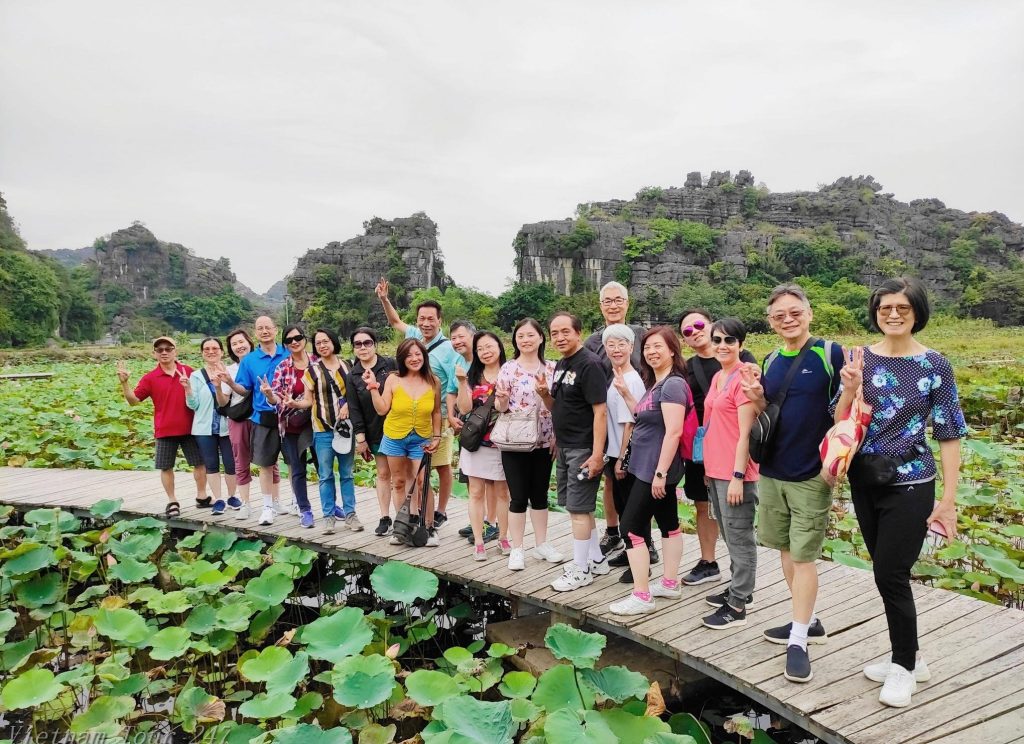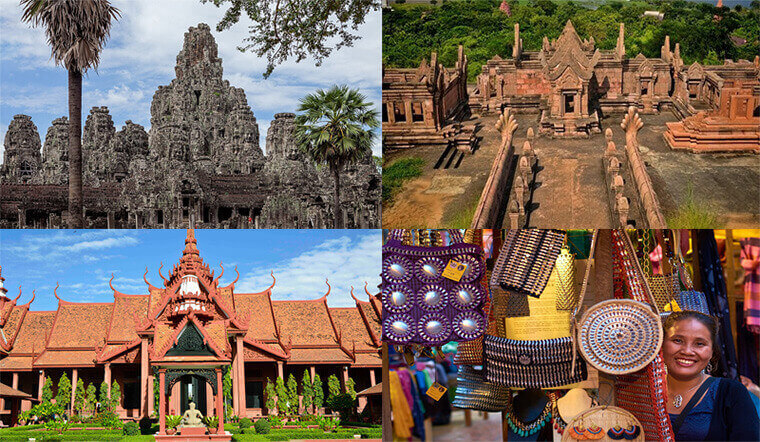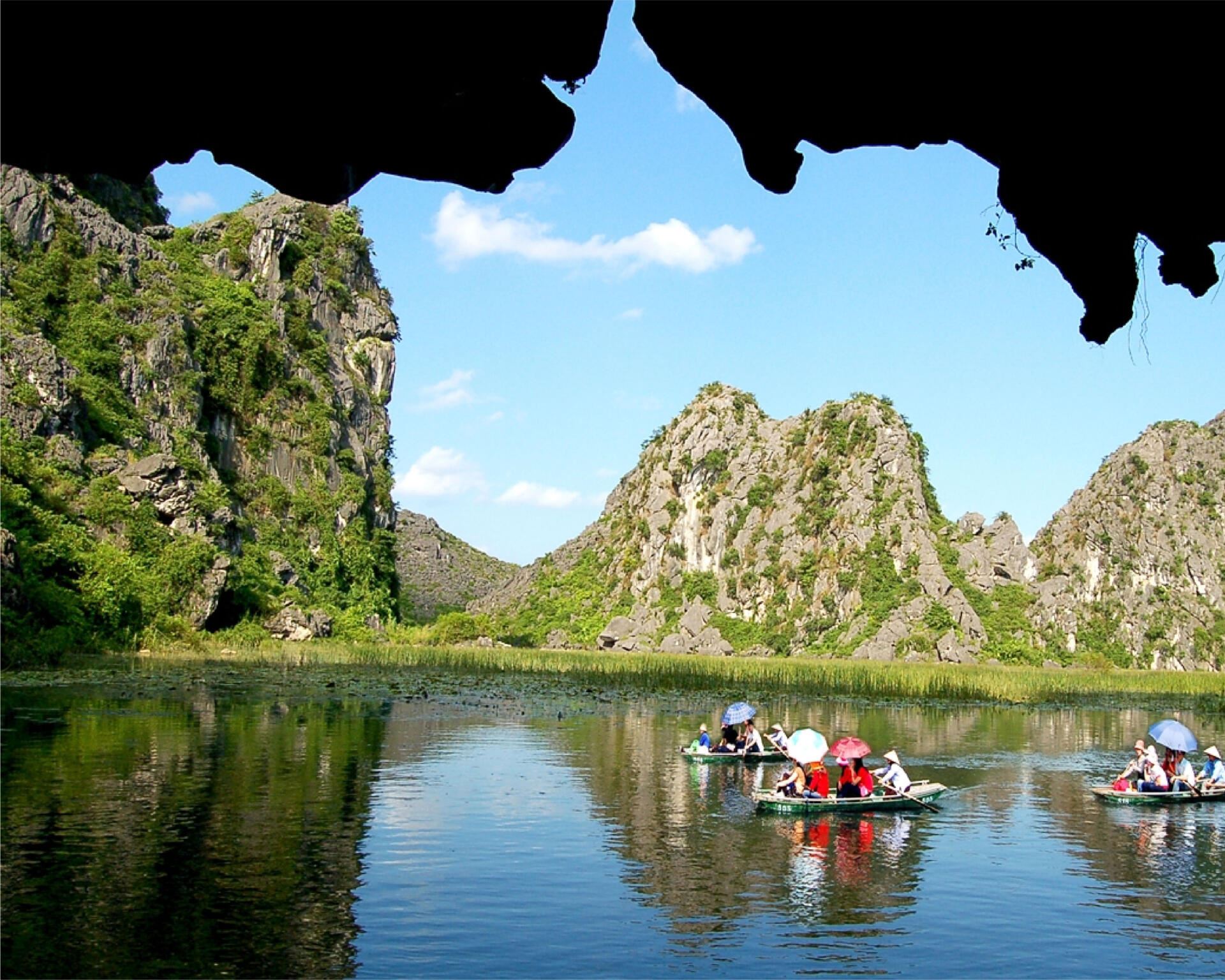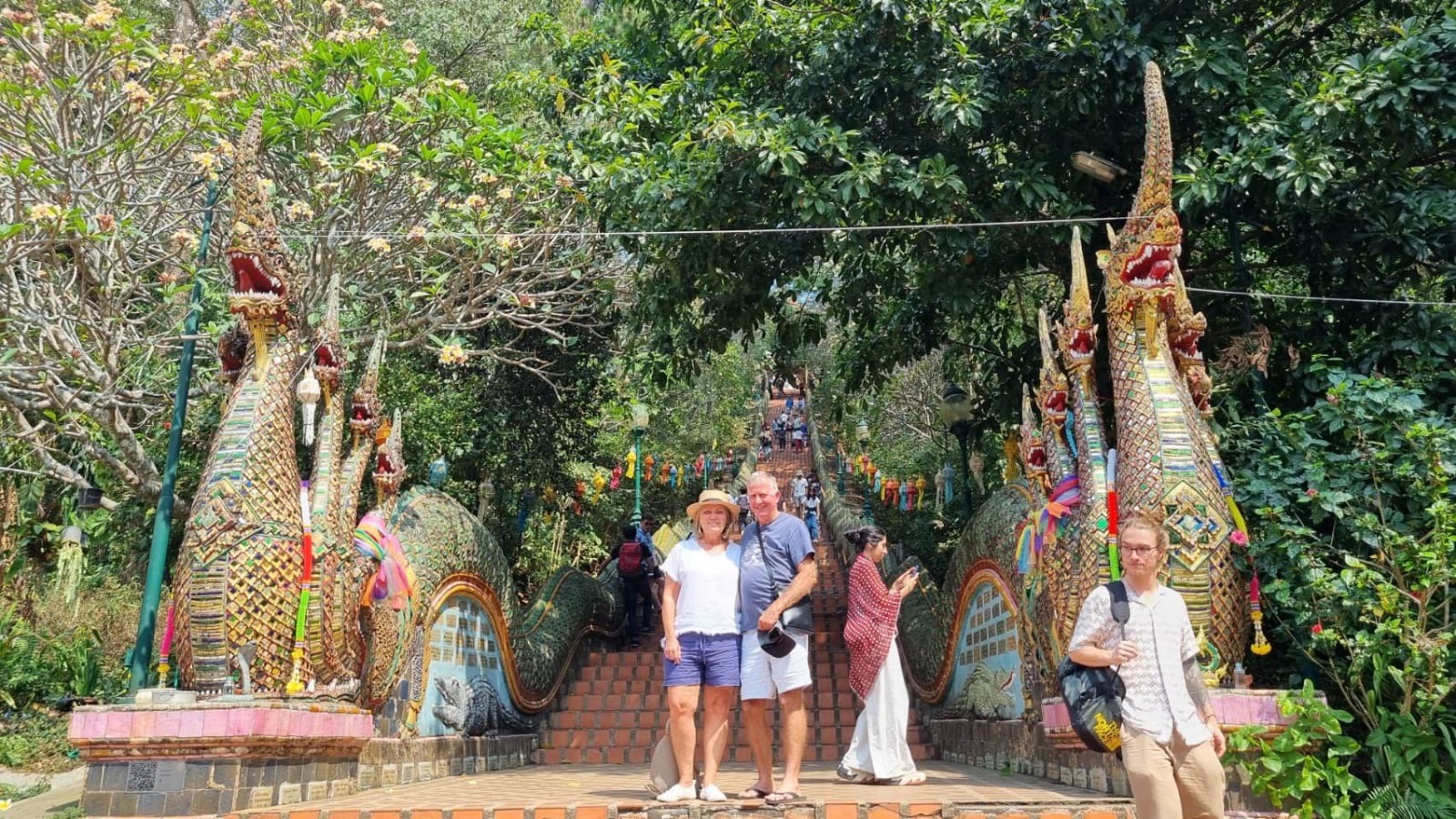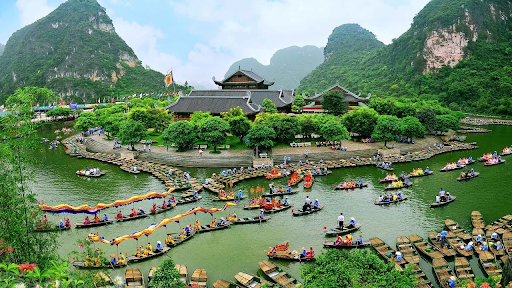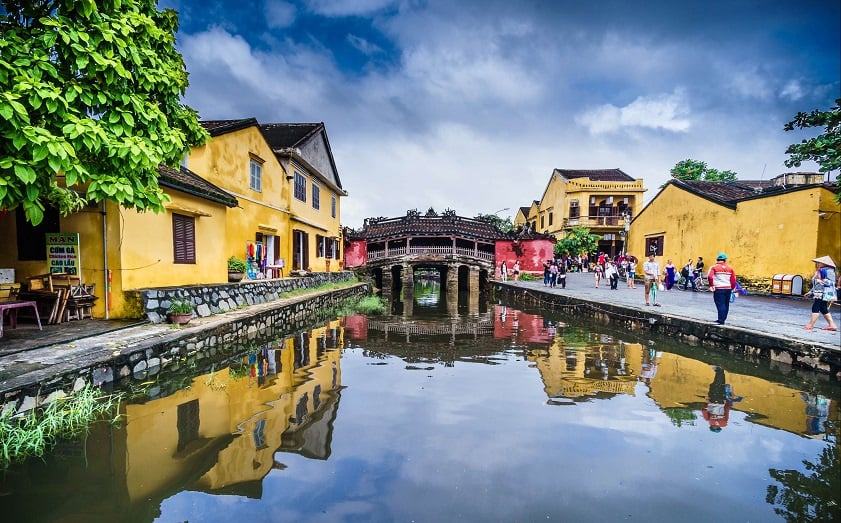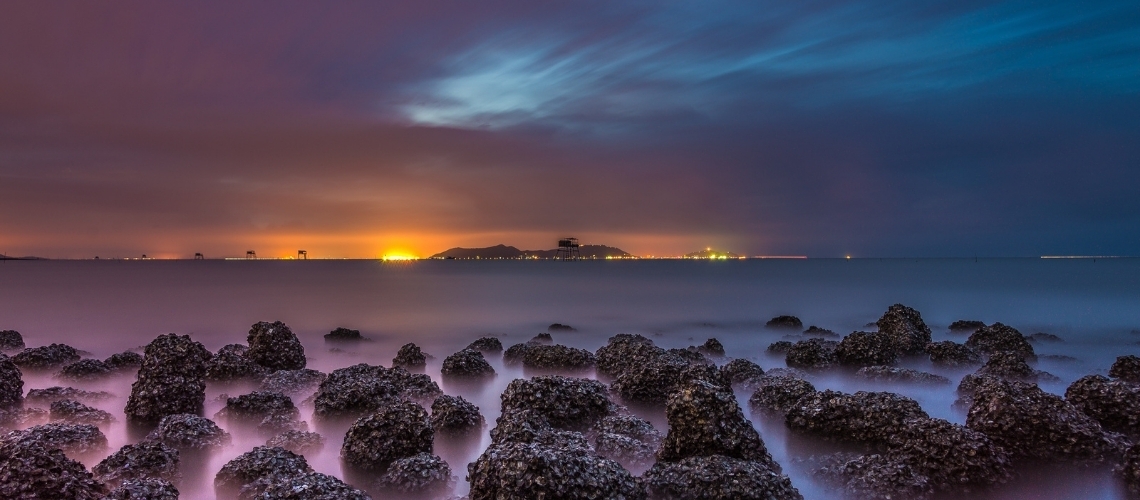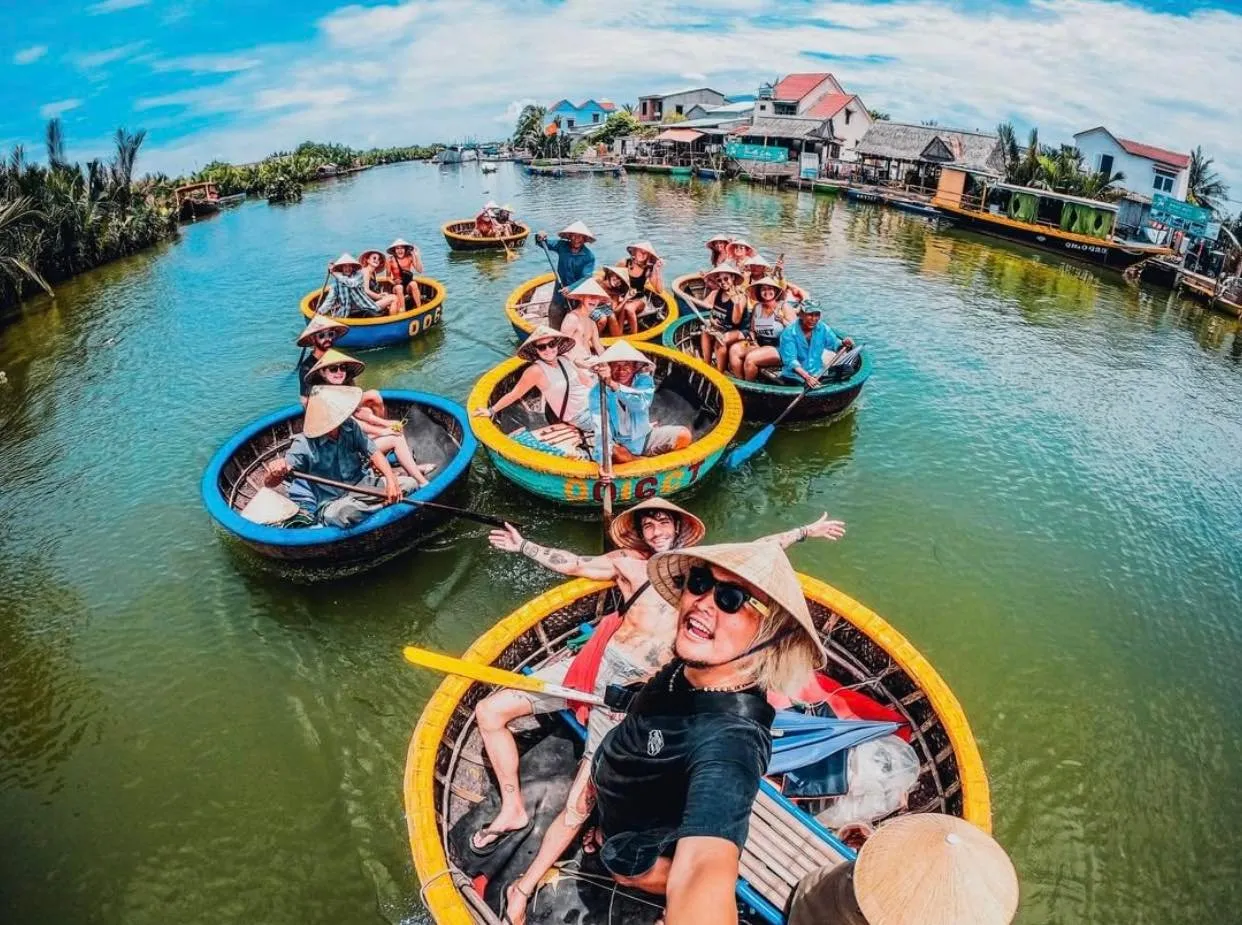Discover why Ninh Binh is a must-visit destination in Vietnam with our comprehensive guide. From the majestic landscapes reminiscent of “Halong Bay on Land” to the rich history and culture waiting to be explored, Ninh Binh offers a unique blend of natural beauty, historical depth, and cultural richness. Our guide delves into the 13+ top attractions in Ninh Binh, including the tranquil waterways of Trang An, the panoramic views from Mua Cave, and the spiritual serenity of Bai Dinh Pagoda. Whether you’re an adventurer, history buff, or nature lover, Ninh Binh has something to captivate every traveler.
Is Ninh binh worth visiting?
Absolutely, Ninh Binh is worth visiting for numerous compelling reasons that make it a must-see destination in Vietnam. First and foremost, Ninh Binh offers a stunning natural landscape that is often referred to as “Halong Bay on Land” because of its majestic limestone karsts and serene waterways. Unlike Halong Bay, you can explore these landscapes up close by rowing boats through tranquil rivers, rice paddies, and under natural caves, offering a more intimate connection with nature.
Ninh Binh is also home to several historical and cultural sites, including the ancient capital of Hoa Lu, which was the first capital of Vietnam in the 10th and 11th centuries. The temples of Dinh and Le Dynasties in Hoa Lu provide a fascinating glimpse into the country’s rich history and cultural heritage.
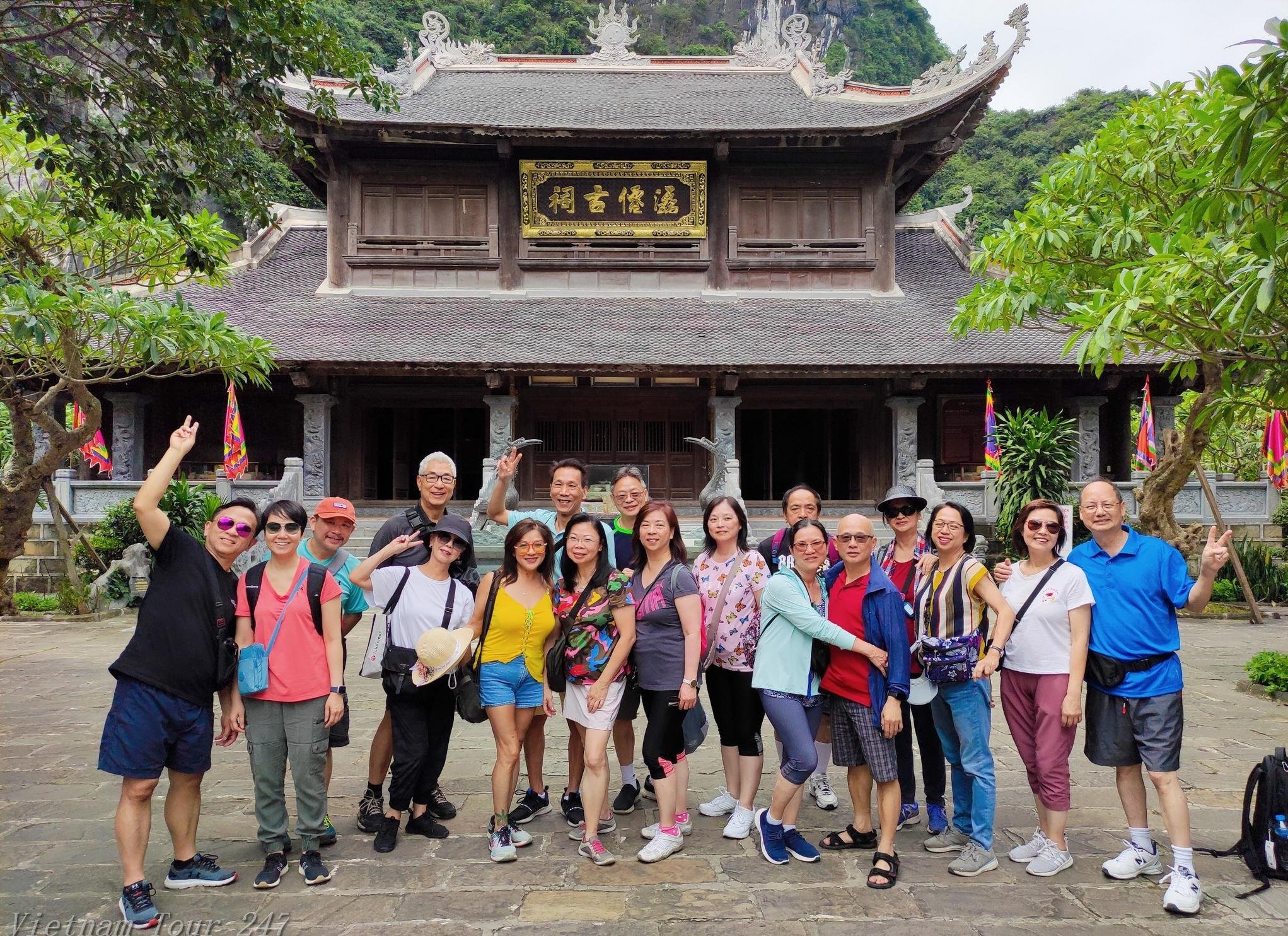
For those interested in spirituality and architecture, the Bai Dinh Pagoda, one of the largest complexes of Buddhist temples in Southeast Asia, showcases impressive Buddhist art, architecture, and statues, including a 10-meter high bronze Buddha and a 36-ton bell.
Moreover, the region’s biodiversity is on full display at places like Cuc Phuong National Park, Vietnam’s first national park, which is home to a vast array of flora and fauna, including endangered species. The park’s Endangered Primate Rescue Center is a testament to Vietnam’s efforts in conservation.
The picturesque landscape of Tam Coc and Trang An, with their river tours winding through caves and alongside towering limestone karsts, not only offers breathtaking views but also opportunities for photography and peaceful boat rides that feel like stepping into another world.
Additionally, Ninh Binh’s local cuisine, characterized by its simplicity and the freshness of its ingredients, offers a culinary experience that’s both authentic and delicious. Dishes such as mountain goat meat, local river fish, and com chay (burned rice) are must-tries.
In essence, Ninh Binh presents a harmonious blend of extraordinary natural beauty, profound historical significance, rich culture, spiritual depth, and unique culinary flavors. Its relatively tranquil and unspoiled environment, compared to Vietnam’s more crowded tourist destinations, makes Ninh Binh a perfect escape into the heart of Vietnam’s natural and cultural heritage. Whether you’re an adventurer, history buff, nature lover, or spiritual seeker, Ninh Binh has something remarkable to offer.
Attractions in ninh binh
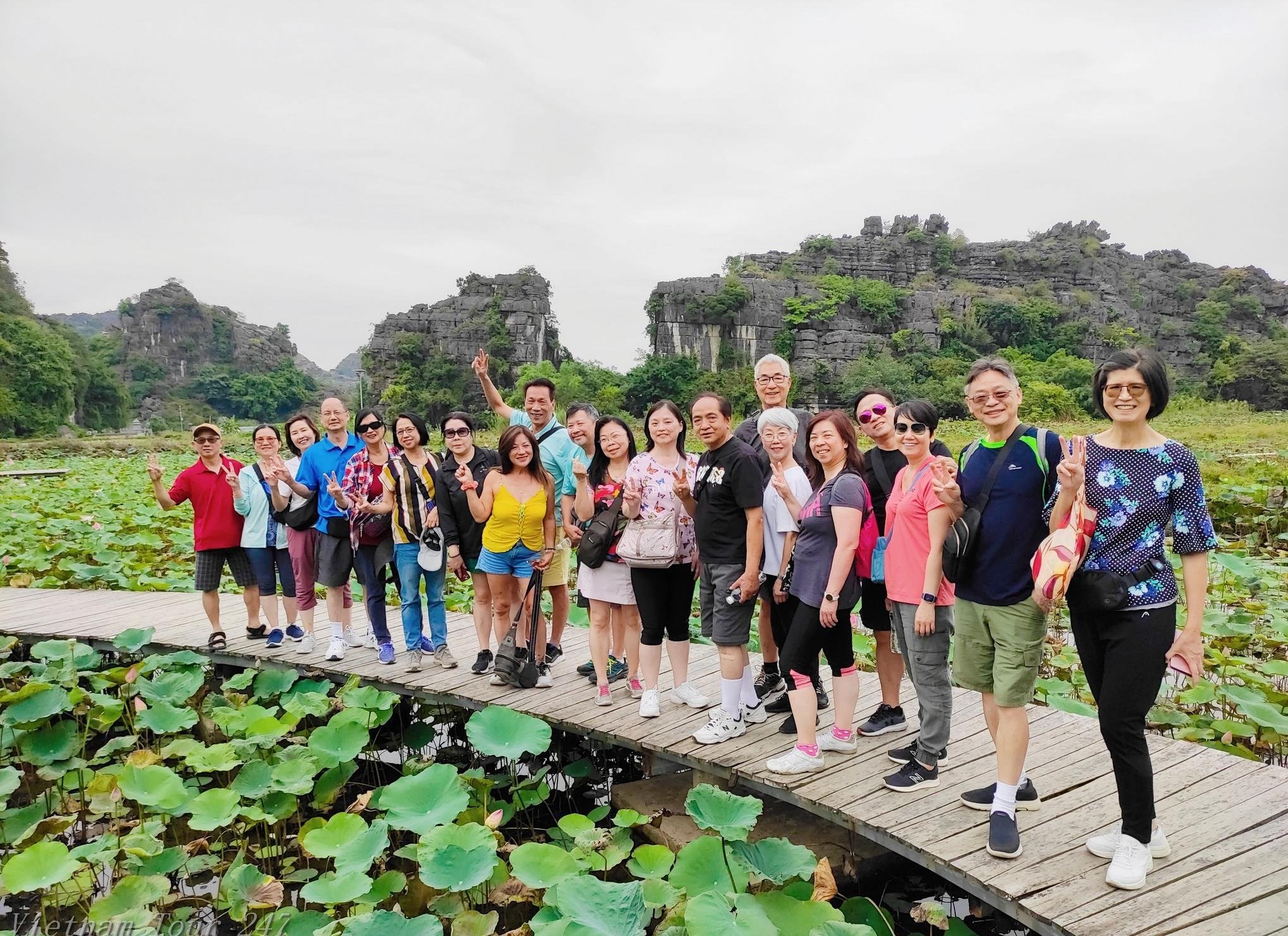
Trang An Ecotourism Complex – UNESCO’s mixed cultural & natural heritage in Vietnam
Tràng An has attracted an increasing number of tourists annually. The best way to explore the beauty of Tràng An Scenic Landscape Complex is by rowing through the river to admire the limestone mountain scenery, discover the mysterious system of scenic spots and hidden caves, and stop at certain areas to visit ancient temples or pagodas and the latest filming location of ‘Kong: Skull Island’.
Trang An is considered a top attraction in Ninh Bình for your travel selection. The site always fascinates visitors with its system of limestone mountains and natural caves. This complex includes 50 caves connected by water through 31 flooded valleys, resembling a magical, shape-shifting maze arranged in an octagonal pattern. The allure of the caves mainly comes from the natural stalactite system with cool water streams, following deep grooves on the cave walls, creating meandering streams.
Tràng An is also dubbed as a place with such a diverse ecosystem that it is likened to an ‘outdoor geological museum’ with more than 310 species of high plants, various types of algae, fungi; 30 species of mammals, over 50 species of birds, dozens of reptile species, including some rare animals like the Delacour’s langur and pheasants.
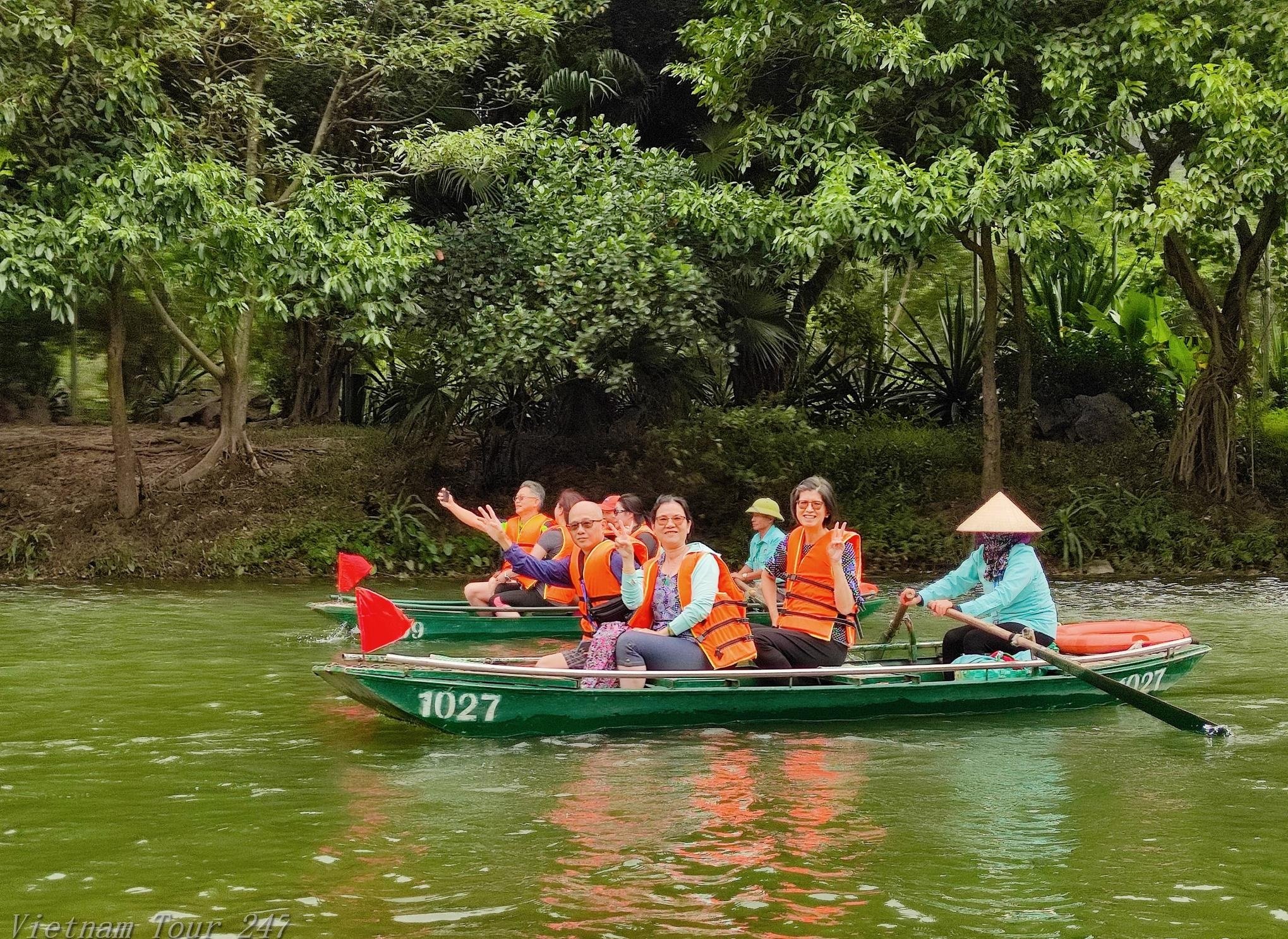
In addition to sitting on a boat to enjoy the beauty of this place, at each stop, visitors can explore unique historical and cultural relics such as Trình Temple (Chấm Palace), which worships two generals of the Đinh family; Trần Temple built from monolithic blue stone, with exquisite carved stones, worshipping General Trần Quý Minh – the general of Oai Sơn Mountain in the era of the 18th Hùng King; Phú Khống – where seven loyal gods of the Đinh dynasty are worshipped, associated with the legend of Emperor Đinh Tiên Hoàng’s death. One of the most attractive scenes is the setting of the movie ‘Kong: Skull Island’.
Mua cave for great view of Ninh Binh’s landscapes
Mua Cave is just a small cave within the Mua Ecotourism Area, where you can undertake a challenging hike up the steps to the mountain’s peak for a fantastic panoramic view of the majestic mountainous landscape of Ninh Bình. It’s wonderful to combine your visit to Tràng An or Tam Coc with a trek to Mua Cave if you enjoy trekking and want to capture some great photos.
The best time for stunning photos is from late May to early June when the rice fields in Tam Cốc change color from green to yellow! These are impressive pictures of the mountains, rivers, and spectacular rice fields in Ninh Bình. Múa Cave is located at the foot of Múa Mountain within the eco-tourism complex in Khe Dầu Hạ village, Ninh Xuân commune, Hoa Lư, Ninh Bình.
Its location is just 3 km away from Ninh Bình Hidden Charm Hotel. A unique feature of this tourist area is the path leading up to the peak of Mua Mountain, built in the architectural style of the Great Wall with nearly 500 stone steps. From the top of Múa Mountain, you can admire the entire beauty of the famous tourist site Tam Cốc with its meandering rice fields and limestone mountains.
According to legend, when King Trần came to Hoa Lư, he established Thái Vi temple and then often came here to listen to beautiful girls dancing and singing. Therefore, this place is known as Múa Cave (Dancing Cave). It is one of the favorite spots for tourists and the most checked-in place by young people making it an emblematic representation of Ninh Bình attractions.
Tam Coc,Thung Nang & Bich Dong area
As the main tour route for Western tourists visiting Ninh Binh, the Tam Coc & Bich Dong area stands out among the attractions in Ninh Binh, characterized by gorgeous limestone mountain views. These can be enjoyed from a rowing boat ride or biking trip along the Tam Coc & Bich Dong area, or on a delightful trek to visit Bich Dong Pagoda.
The boat tour in Tam Coc, known for its three caves fewer than Trang An offers opportunities to view the rice fields or the locals’ farming activities. For a less touristic boat tour, offering views of lotus farms and two caves, opt for the rowing boat route in the Thung Nang area (situated between Tam Coc & Bich Dong). Tam Coc – Bich Dong is a famous scenic spot in Ninh Binh, dubbed the ‘Halong Bay on land’ or ‘The Second Best Cave in the South’, located in Hoa Lu district, Quan Nho area, and the town of Tam Diep.
This site maintains its pristine beauty created by nature, with many beautiful limestone caves and famous historical and cultural relics such as Tam Coc, Thai Vi Temple, Bich Dong Pagoda, Thung Nang Valley, Tien Cave, and But Cave, solidifying its status among the top attractions in Ninh Binh.
Bich Dong Pagoda (meaning ‘Green Grotto’) is situated about 2 km from the boat port. Named by Prime Minister Nguyen Nghiem, the father of the great poet Nguyen Du, in 1773, it has a small temple in front of the cave. The Ngo Dong River meanders along the mountainside, with rice fields across the river. Early June to July marks the lotus blooming season in the Bich Dong Pagoda area, adding to the list of captivating attractions in Ninh Binh.
Hoa Lu ancient capital
Chosen as the heart of Vietnam during the Dinh & Le dynasties, your trip to Ninh Binh will become more fascinating as you explore the ancient capital of Hoa Lu with a deep understanding of Vietnam’s 10th & 11th-century history and the architectural value of ancient temples built in the 2nd century (of the Dinh – Le dynasties – remnants of ancient royal palaces) – the top historical attractions in Ninh Binh.
Hoa Lu ancient capital was the political, economic, and cultural center of Dai Co Viet (the old kingdom of Vietnam), the first capital in the civilization of Dai Viet of the nation, during the Vietnamese feudal period. Hoa Lu capital, located in Hoa Lu district, existed for 42 years through three successive dynasties: Dinh – Early Le – Ly (968 – 1010). In 1010, King Ly Thai To moved the capital from Hoa Lu (Ninh Binh) to Thang Long (Hanoi). Since then, Hoa Lu became the ancient capital.
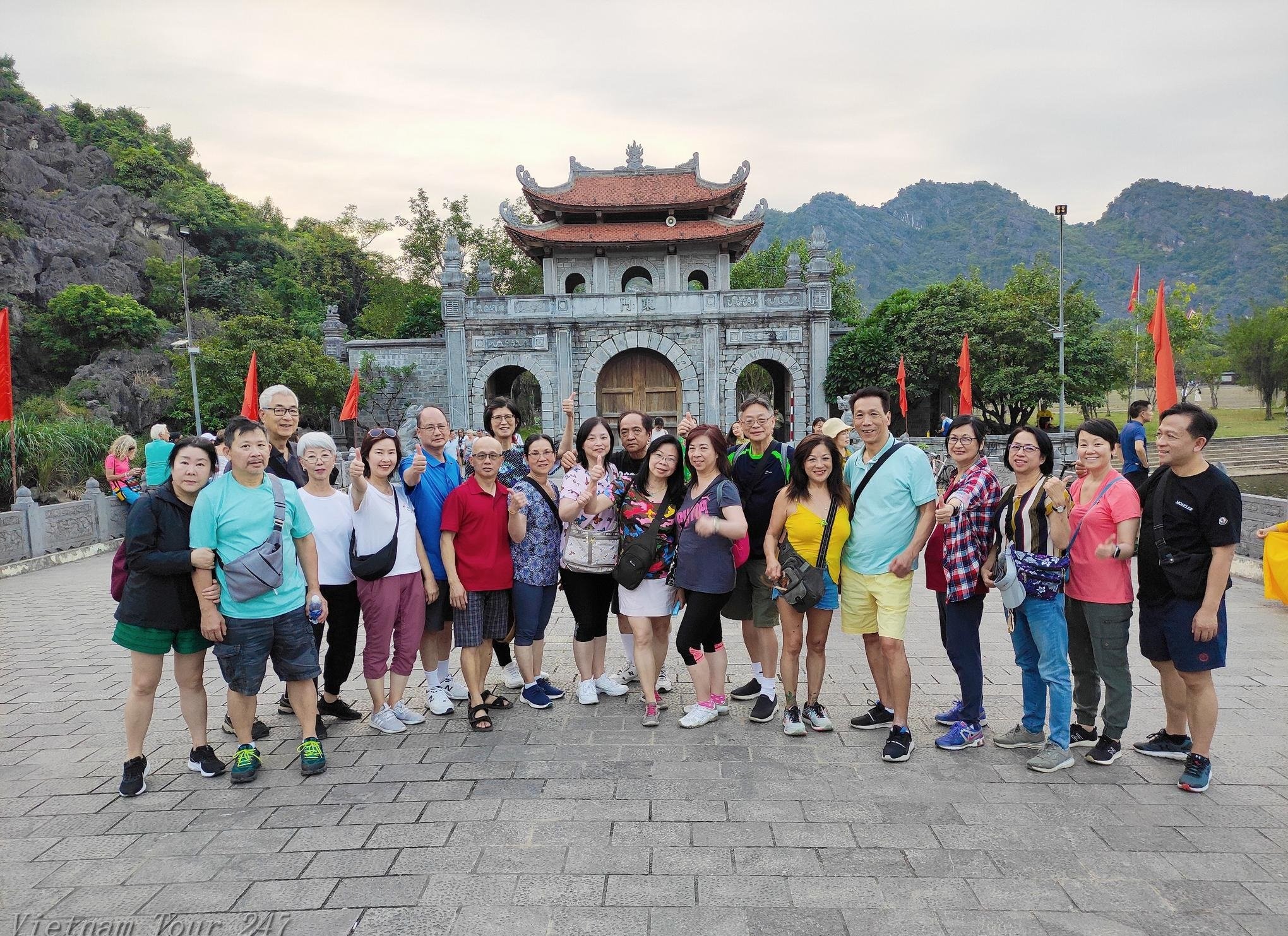
Despite the passage of time and the ups and downs of history, the capital Hoa Lu still retains heroic historical records. For example, these include walls created by nature and humans; the ancient, majestic temple of King Dinh Tien Hoang and King Le Dai Hanh. These will forever be bright historical milestones for the Vietnamese people in general and the people of Ninh Binh in particular to respect and take pride in.
Just 200 meters from the northern gate of the relic site is a place known as Nhat Tru Pagoda. It is an ancient temple built in the 10th century, holding many artifacts associated with the Hoa Lu capital, among which the most notable is the stone pillar in front of the temple yard, recognized as a national treasure.
About 50 meters from the temple gate is the shrine of Princess Phat Kim, one of the daughters of King Dinh Tien Hoang. Legend has it that this place was formerly the foundation of the Vong Nguyet palace where Princess Phat Kim lived. In front of the yard, there is a large well that states Princess Phat Kim committed suicide there.
Van Long nature reserve – the biggest wetland area in the north of Vietnam
As the largest wetland area in Northern Vietnam, Van Long Nature Reserve stands out with a stunning limestone outcrop situated above the marshlands – home to the rare Delacour’s langur listed in Vietnam’s Red Book. It’s fantastic to take a boat trip along the coastline of the mountains if you can watch them scampering around the mountain slopes. Van Long is also a land that attracts many migratory bird species in winter from the North, so if you visit this wetland area in winter (from November to April), you can witness thousands of birds, herons, and storks flying around, creating a beautiful scene reminiscent of the latest “Kong: Skull Island” movie, which was filmed in Van Long.
Van Long Nature Reserve is the largest waterfowl sanctuary in the Northern Delta region. It is located in the northeast of Gia Vien district, Ninh Binh province. Opened for exploration in 1998, it has since become one of Vietnam’s significant tourist destinations, awarded two records by the Vietnam Records Centre: “The place with the highest number of Delacour’s langurs” and “The largest natural painting”. In 1999, it was designated a nature reserve, included in the list of protected wetlands and the list of special-use forests in Vietnam. In 2019, Van Long was honored to be recognized as Vietnam’s ninth Ramsar site in the world.
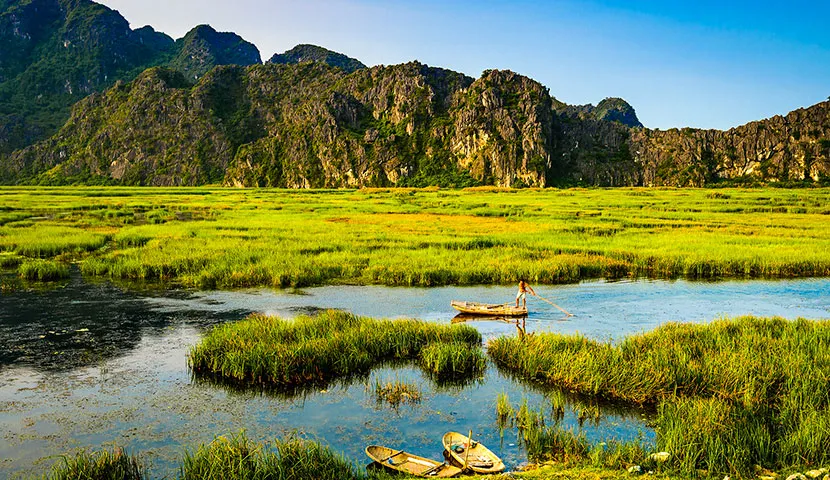
Not just a nature reserve, the Van Long wetland area is also famous for its captivating landscape. Known as the “bay without waves,” when boating in the reservoir, visitors will notice the calm water surface acting like a giant mirror. A watercolor painting that reflects in detail each powerful sculpture of the limestone blocks with shapes fitting like Mèo Cao Mountain, Mâm Xôi Mountain, Hòm Sách Mountain, Đá Bàn Mountain, Nghiên Mountain, Mồ Côi Mountain, and Cô Tiên Mountain. However, the water here does not have the blue color of the sea but clearly shows the layers of moss at the bottom.
Kenh Ga wetland or Chicken Canal – nice experience of local life on the wetland
Ken Ga is believed to have been named for the abundance of wild chickens that once inhabited the area, leading local residents to call it Chicken Canal or Ken Ga. Quite close and similar to the Van Long Nature Reserve, Ken Ga is flooded year-round – a wetland surrounded by striking limestone outcrops.
Due to the water conditions, farmers here can only harvest one rice crop per year and rely on fishing for their livelihood for the rest of the year. Visiting Ken Ga, you will explore by motorboat along the riverbank, observing local villages, churches, stunning limestone formations, and local farming or fishing activities. Ken Ga is also renowned for its hot springs, which are very beneficial for health. If you have time, you can enjoy a health-boosting mineral bath in these hot springs.
The Ken Ga hot springs are located in Ken Ga village, Gia Thinh commune, Gia Vien district, approximately 25km northwest of Ninh Binh city. This mineral water source contains various salts such as Sodium Chloride, Calcium, Magnesium Chloride, and Bicarbonate, with a stable temperature of 53°C, helping to cure diseases, restore health, and stimulate digestion through baths combined with physical therapy.
Situated beside a serene Vietnamese village along the picturesque Hoang Long River, the Ken Ga hot springs have created a unique rural tourism destination, offering an interesting weekend retreat for visitors.
Cuc Phuong national park – the oldest national park in Vietnam
As the largest and best-protected national park in Vietnam, Cuc Phuong boasts a rich fauna and flora. During a day trip to Cuc Phuong National Park, you can experience numerous giant trees and endangered primate species. You have the option to take long or short trekking routes, choose to cycle, or stay with the local Muong ethnic people in the core area of the park. This is also a spot for birdwatching enthusiasts to observe rare bird species. Located 45km northwest of Ninh Binh city, Cuc Phuong National Park is the first national park and nature reserve in Vietnam. The park encompasses a diverse ecosystem with characteristics of a tropical rainforest. Many plant and animal species at high risk of extinction have been discovered and conserved here. Notably, around April, Cuc Phuong National Park attracts visitors with its vibrant butterfly season.
Bai Dinh pagoda – the largest Buddhist Temple in the South East Asia
Breaking many records in Vietnam and Southeast Asia: the largest temple in Asia, the longest stone Arhat corridor, the largest bronze Buddha statue…, Bai Dinh Temple is a particularly attractive destination for those who love religion and architecture, making it one of the top things to do among the attractions in Ninh Binh. Located in Gia Vien district, at the gateway to the west of the ancient capital Hoa Lu, Bai Dinh Temple harmoniously combines the sacred, serene atmosphere of the ancient Bai Dinh Temple with the majestic grandeur of the new Bai Dinh Temple. This spiritual tourism complex is a must-visit for pilgrims from all directions among the attractions in Ninh Binh.
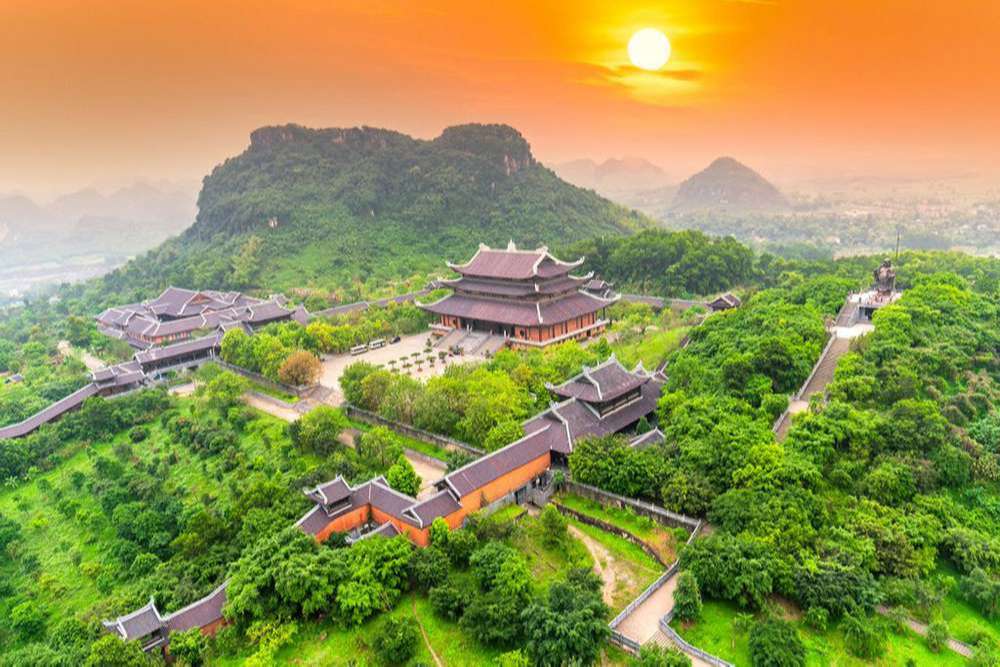
The Bai Dinh Temple tourism complex, spanning 700 hectares, includes both the ancient and the new temples and holds many Asian and Vietnamese records: the largest gold-plated bronze statue of Sakyamuni Buddha in Asia, the longest corridor of 500 Arhats in Asia, the largest bronze Maitreya Buddha statue in Vietnam, and the largest bell in Vietnam… Notably, it also houses sarira, treasured relics of the Buddha, highlighting its significance among the attractions in Ninh Binh.
Phat Diem cathedral – the massive stone construction in 19th century
Ninh Binh is the region with the largest Catholic population in Northern Vietnam, making its religious sites key attractions in Ninh Binh. That’s why you can visit many churches on your journey to Ninh Binh, especially in Kim Son district, which is notable among the attractions in Ninh Binh for its spiritual significance. But the most famous and magnificent, a highlight among the attractions in Ninh Binh, is the Phat Diem stone church, built from stone over 24 years by Priest Tran Luc and local parishioners. The church is a beautiful combination of Eastern and Western architecture.
The entire structure forms an original whole where Western Gothic architecture perfectly integrates with traditional Vietnamese temples – an interesting site that should not be missed in your Ninh Binh tour. Phat Diem Church (often referred to as Phat Diem stone church) is a Catholic church complex covering 22 hectares, located in Phat Diem town, Kim Son district, standing out as a monumental attraction in Ninh Binh.
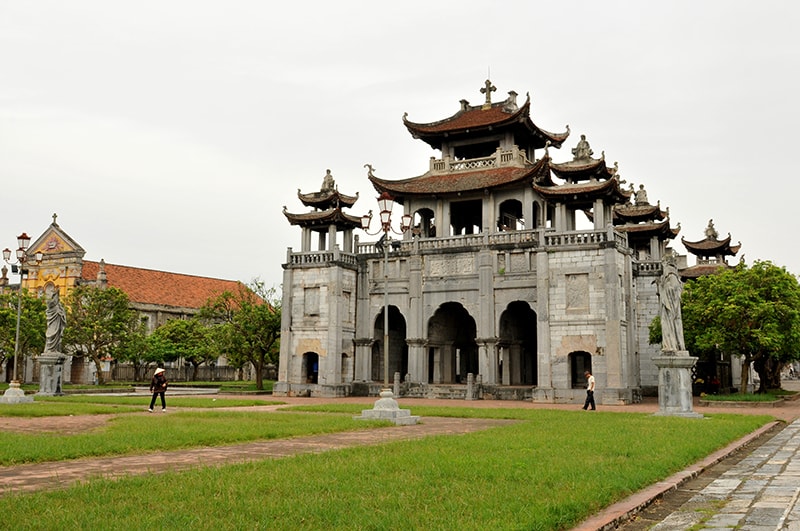
This grand construction, a sanctuary of the Phat Diem bishopric, was built from 1875 and was fundamentally completed by 1898. The uniqueness of this construction is that although it is a Catholic church, it is modeled on the traditional architectural style of Vietnamese communal houses and temples. This architectural complex was gradually overseen by Priest Peter Tran Luc (also known as old Mr. Sau) – the priest of the Phat Diem diocese from 1865) and the Catholic community for over 30 years, marking it as a significant religious attraction in Ninh Binh.
Thung Nham Ecotourism Complex
Thung Nham, renowned not only for its diverse bird species but also for its caves on the water or in the mountains, hosts some of the top attractions in Ninh Binh that tourists should not miss: But Cave (featuring a statue of a fairy made from plaster, with no light), Vai Gioi Cave (spanning three levels with many mystical stalactites), and the Bird Sanctuary where you can visit by boat or walk nearby to observe hundreds of bird species, storks, and herons, especially in the late afternoon.
This newly established eco-tourism area opens up with accommodations, restaurants, and activities you can enjoy on a day trip or overnight stay in Ninh Binh. Thung Nham Bird Garden ecotourism area (also known as Bird Valley) is located in Hoa Lu district, on the route from Tam Coc boat station to Bich Dong Pagoda. It stands out among the attractions in Ninh Binh as a destination that combines cultural, spiritual, scenic, and biodiversity elements.
Visiting Thung Nham Valley, guests have the opportunity to admire the mobile banyan tree, thousand-year-old bamboo, Vai Gioi Cave, But Cave, Mermaid Cave, Thuy Cung Cave…; enjoy hick fruits or navigate through flooded forests by boat, exploring the wildlife of various bird species.
Read more: Melody Of Mountain And Sea – 9 Days
Thien Ha (Galaxy) cave – the real paradise on earth : less touristic & pristinely natural landscapes
Recently discovered and developed in the Ninh Binh tourism sector, Thien Ha (Galaxy) Cave has received excellent reviews on TripAdvisor for its wonderful natural landscape and being one of the less touristy attractions in Ninh Binh. For me, it represents the combined beauty of all “Trang An, Tam Coc & Van Long” that you can find on a boat trip in Thien Ha (Galaxy) Cave. Here, you can find the rice field scenery and mountainous landscapes of Tam Coc, the beautiful mysterious caves of Trang An; and the natural habitat of birds and the wild nature of Van Long.
Thien Ha Cave is located in the Tuong mountain range with a height of nearly 200m, forming a part of the natural fortress that surrounded and protected the southwest of Hoa Lu capital from the 10th century, associated with many historical and cultural landmarks such as the Le dynasty boat station, “Phat Dau Son” mountain and “Thuong Ruong Dau Linh” field.
From the Muong – Tho Ha mountain village in Son Ha commune, visitors can take a boat ride through a small canal about 1 km long, nestled in the countryside. Visitors then continue to walk on a 500m long stone path along the base of the Tuong mountain to reach the cave entrance.
The cave spans 700m, including a 200m dry cave and a 500m water cave. The shapes formed by the rocks are named accordingly: the hunting fox, which means the resting elephant, the tiger stalking its prey, the monkey climbing trees. Above is a worship hall with statues of the Buddha, Tang Sanzang chanting and praying for his disciples. All these evoke curiosity and the desire for exploration in visitors.
Monastery of Chau Son cistercians
This is the Chau Son Cistercian Monastery, located in Phu Son commune, Nho Quan district, Ninh Binh. Along with the Phat Diem stone church, tourists consider the Chau Son Monastery one of the destinations everyone should visit when traveling in Ninh Binh. The monastery was built in 1939 in a tranquil area, surrounded by mountains and forests, about 65 km from the Phat Diem stone church and about 25 km from Ninh Binh Hidden Charm.
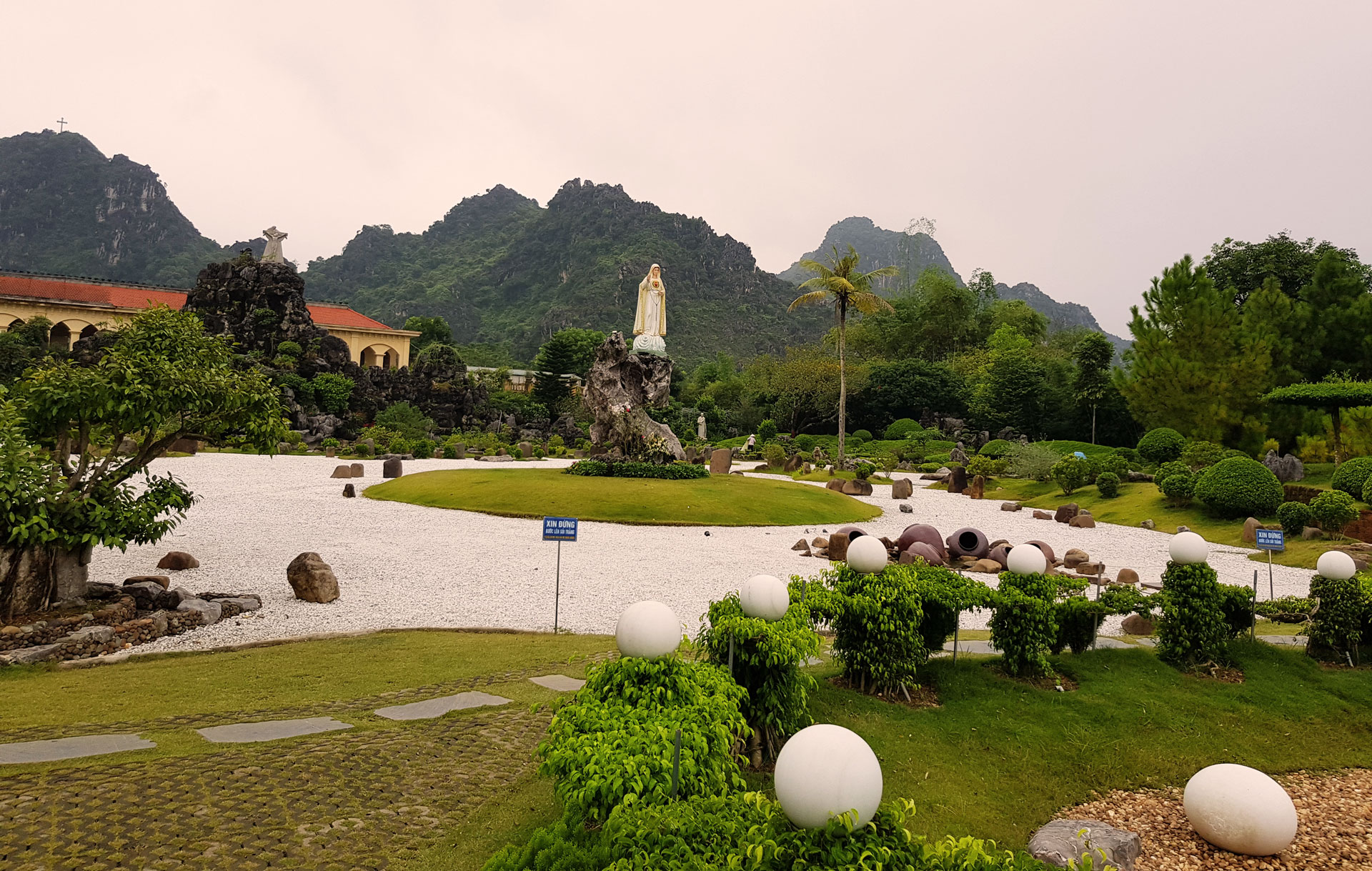
The church within the monastery was constructed with a Gothic architectural design, featuring un-plastered red bricks, and a white dome roof 21 meters high, praised as the pinnacle of this architectural art. The monastery’s grounds are very spacious and decorated with miniature landscapes, sculptures, and a giant egg made of stone,…
Read more: Travel Agency Vietnam: Best Travel Agency for Vietnam Tours
Am Tien Cave – Tuyet Tinh Coc
Just 300 meters away from the ancient capital Hoa Lu, Am Tien Cave – often referred to as the ‘Forbidden Cove’ due to its resemblance to the legendary setting in the famous martial arts movie “The Condor Heroes” – has become an attractive tourist destination. The largest area within Am Tien Cave is a flooded valley, surrounded by steep cliffs. The tranquility here creates a world apart. The mountain and river scenery is majestic and pristine.
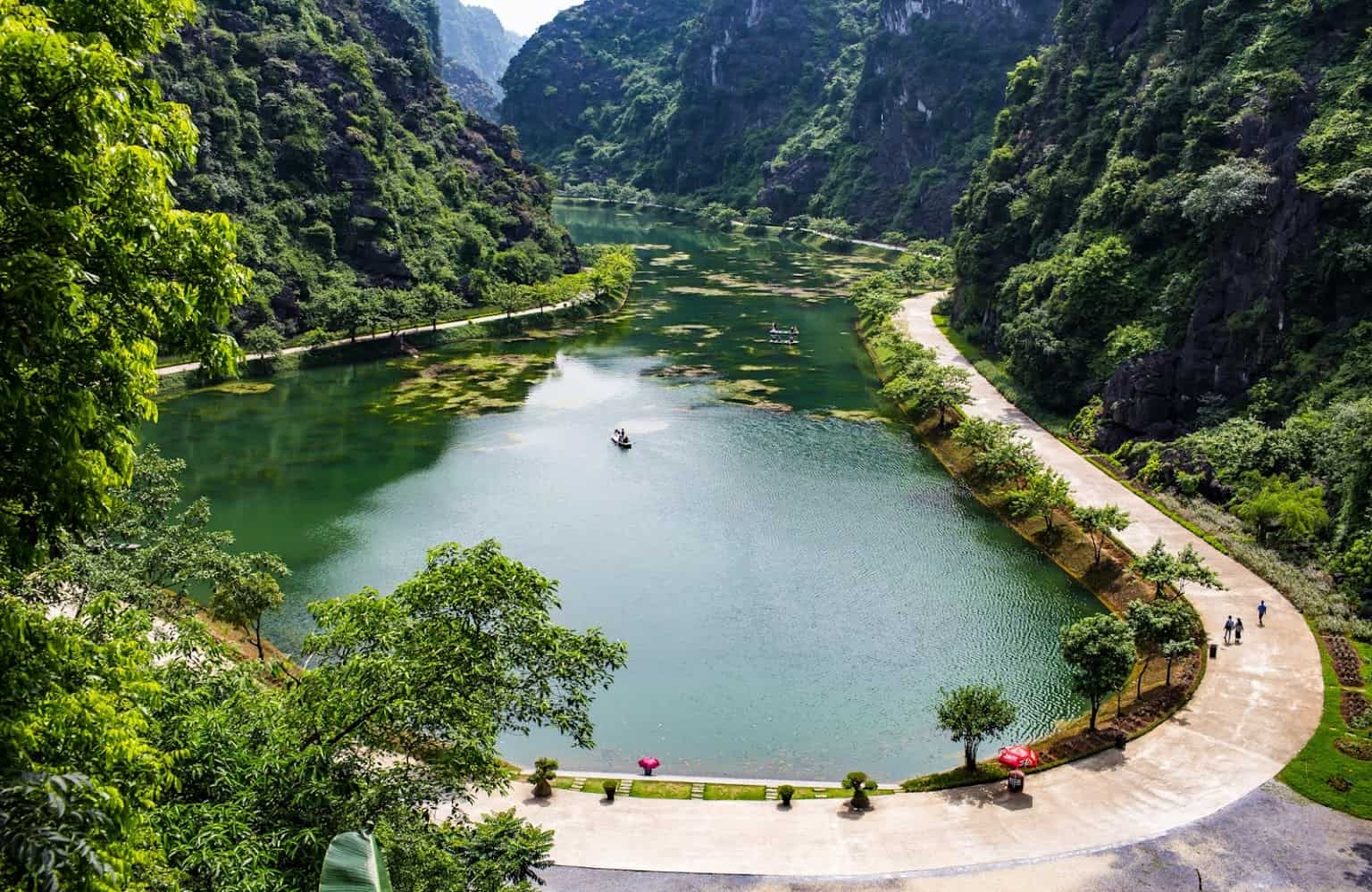
At the foot of the mountain is a freshwater lake, where one can clearly see the algae, locally known as Ao Giai. The algae and aquatic organisms thrive, making the scenery even more mystical and romantic. The cave features many stalactites shaped by mother nature into forms of rice plants, money trees, Buddha’s hand, and hanging lotus buds dripping water.
Legend has it that in the 10th century, understanding the treacherous terrain situated halfway up the mountain, surrounded by deep ponds and abysses, King Dinh Tien Hoang chose this area for executions, and the cave was used to nurture and capture tigers. At the foot of the mountain is Ao Giai, where the king ordered crocodiles to be raised.
Criminals would be executed or thrown into the pond as a warning to others. Additionally, this was the place where Empress Dowager Duong Van Nga became a nun in her later years. During the Ly dynasty, Zen Master Nguyen Minh Khong, passing by the cave and feeling its heavy, ominous atmosphere, chanted the Phap Hoa Sutra day and night; he renamed it Am Tien Cave. The sound of the dharma gradually reached all beings, also dissolving the souls of the executed prisoners, making this place serene.
Choosing Vietnam Tour 247 for your Ninh Binh adventure means embarking on a hassle-free and deeply enriching travel experience. With their expertly curated itineraries, you’ll dive into the heart of Ninh Binh’s breathtaking landscapes, historic sites, and cultural treasures without the stress of planning and logistics. Their tours are designed to maximize your time, ensuring you see the best of Ninh Binh, from serene river rides in Trang An to the majestic Bai Dinh Pagoda. Plus, with Vietnam Tour 247’s knowledgeable guides, you’ll gain insights into the local culture and history not found in guidebooks. Opting for Vietnam Tour 247 is your ticket to a memorable, worry-free exploration of one of Vietnam’s most stunning regions.
In conclusion, the myriad of attractions in Ninh Binh, from the serene landscapes of Tam Coc and the historical significance of Hoa Lu to the architectural marvels like Phat Diem Cathedral, solidifies Ninh Binh’s status as a jewel in Vietnam’s tourism crown. This region, with its unique blend of natural wonders, historical sites, and cultural depth, offers an unparalleled travel experience that deeply connects visitors with the essence of Vietnam’s natural and cultural heritage. Whether you’re paddling through the ethereal beauty of limestone karsts, exploring the ancient capitals, or reveling in the spiritual ambiance of its temples and pagodas, Ninh Binh ensures a journey filled with discovery and awe. Don’t miss the chance to explore these captivating attractions in Ninh Binh, where every turn reveals a new piece of Vietnam’s soul.
Read more: Essence Of Northern Vietnam – 8 Days

